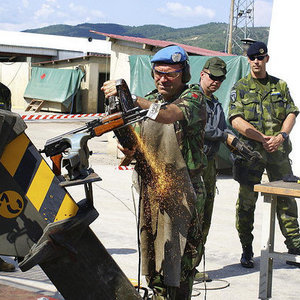Sequencing Next Generation Disarmament, Demobilization, and Reintegration in Peace Processes
By Rob Muggah and Chris O’Donnell
The disarmament, demobilization, and reintegration (DDR) of former combatants is a mainstay of the contemporary post-war peace agenda. Yet over the past two decades the expectations of what DDR should achieve have dramatically expanded. It is not only a regular feature of conventional UN-mandated peace support interventions, but also increasingly a component of counter-insurgency, stabilization, crime prevention, and counterextremist operations. In the process, DDR has transformed from a carefully sequenced and discrete set of activities mandated by a peace agreement to an ever-widening array of security and development measures that can, and often does, include the negotiation and implementation of the terms of peace. These changes in the policy and practice of DDR are precipitated by a transformation in the dynamics of organized violence around the world and the corresponding exigencies of diplomats, defense, and development experts. A growing focus is on disengaging, deradicalizing, and rehabilitating combatants in North and West Africa, the Middle East, and Central and South Asia. This chapter highlights the changes in the scope and scale of DDR over the past thirty years and explores the likely trajectories of DDR in the twenty-first century.
VIEW PDF



